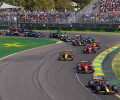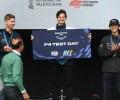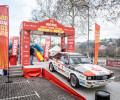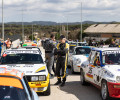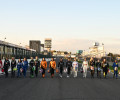PLOTTING THE RIGHT ROUTE TO THE TOP

Day Two’s first plenary session centred on motor sport’s attempts to improve access to competition for young drivers and methods of developing motor sport careers once they are involved.
To begin the session, FIA Deputy President for Sport Graham Stoker outlined how the federation is helping to grant access to motor sport beyond karting via the streamlining of the junior single-seater racing ladder.
He added that the FIA’s commitment to grassroots development has been bolstered by increased funding from the FIA Foundation, with its President Tim Keown taking to the stage to encourage ASNs to make funding applications, particularly for projects related to motor sport safety.
The session then turned to a panel of racing experts, all of whom put the accent firmly on access, training and affordability.
GP2 racer Alexander Rossi congratulated the FIA’s Single Seater Commission on streamlining the racing ladder, saying that for drivers making their way to the top level one of the main pitfalls is choosing the correct series in which to race and balancing that choice against available budget. A clearer, more affordable route would make that choice simpler for young drivers.
Emerson Fittipaldi, President of the FIA Drivers’ Commission, agreed, saying that plotting the racing path of his grandson Pietro, who is currently competing in the FIA European F3 Championship, had been a complex process and that the creation of a measurable path to the top will be of great benefit to young drivers. He particularly praised the new F4 category, saying that it has the right characteristics to become a globally raced formula.
The two-time F1 champion added that while the Drivers’ Commission’s number one priority is the improvement of safety in motor sport, it also holds the improvement of access to motor sport as a major goal.
He said one of the major challenges facing motor sport is the popularity of computer gaming among youngster, adding that motor sport must embrace it as a tool for bringing kids to racing and then translate their enthusiasm for virtual racing into real-world competition.
John Doonan of Mazda’s US motor sport programme outlined how the manufacturer has specialised in driver development through its Road to Indy ladder taking in karting, US F2000, the Pro-Mazda Series, Indy Lights and eventually Indycar racing.
He pointed to the programme’s success in providing 55 fully-funded drives to 48 drivers in recent years and added that 23 of the drivers who raced in this year’s Indy 500 had been through the programme at some point in their career.
Andrew Papadopoulos, President of CAMS, then outlined how the ASN had developed its new F4 Championship, which begins in Townsville this weekend, saying that ASNs had a key role to play in developing motor sport worldwide, particularly in highlighting the value a home-grown champion at international level can have in growing domestic motor sport.

 Facebook
Facebook Twitter
Twitter